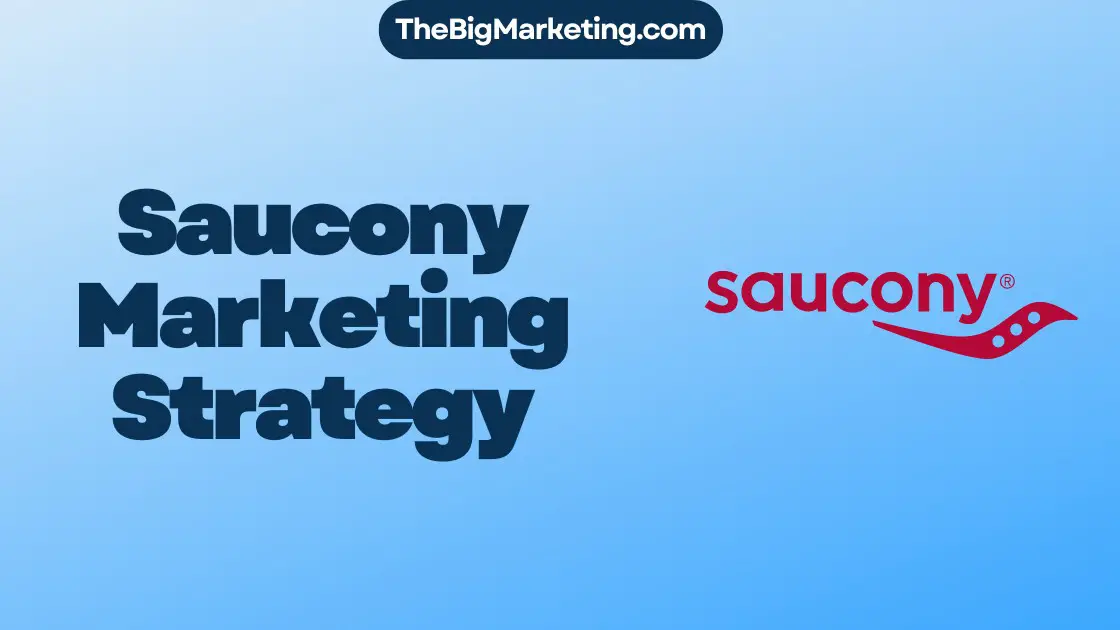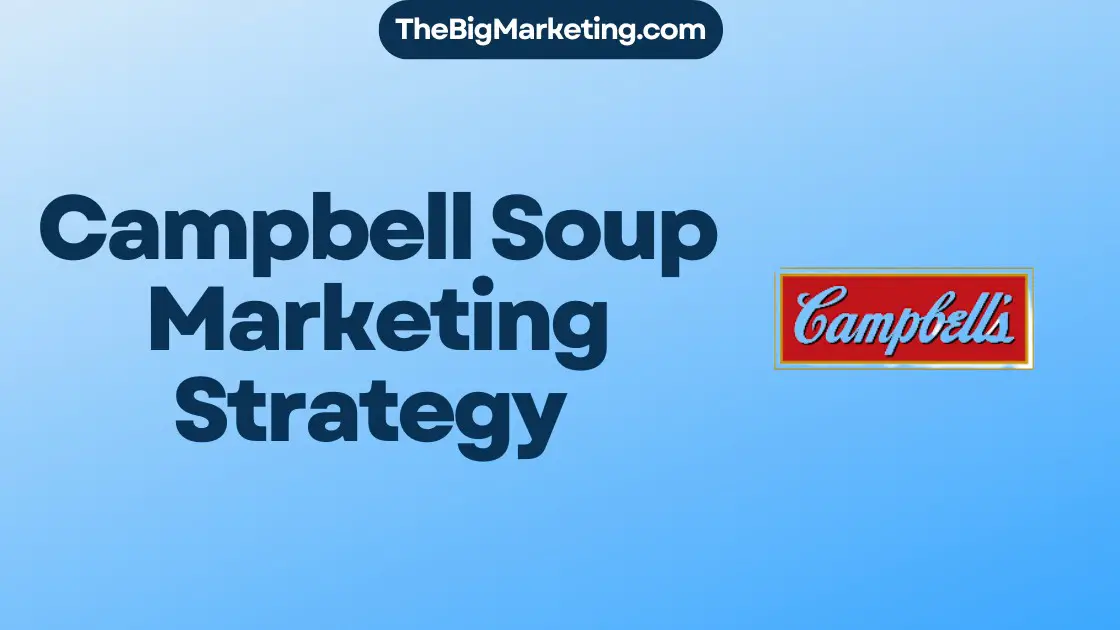Rio Tinto, a prominent Anglo-Australian multinational company, has established itself as a global powerhouse in the metals and mining industry. With a strong track record of growth and success, Rio Tinto has implemented a comprehensive marketing strategy to maintain its market leadership position.
As part of their marketing plan, Rio Tinto embraces digital marketing techniques to enhance their global reach and engage with a broader audience. By leveraging innovative promotional tactics and adopting a strategic marketing approach, they continue to strengthen their branding and market presence.
Market research plays a crucial role in Rio Tinto’s marketing strategy, allowing them to gain insights into customer preferences and tailor their advertising campaigns accordingly. Through effective market segmentation, Rio Tinto reaches the right customers and delivers products that meet their specific needs.
Rio Tinto’s strong emphasis on branding strategy ensures that their products are synonymous with quality and reliability. They understand the importance of creating a positive brand image and utilize various branding techniques to differentiate themselves from competitors.
With a focus on continuous improvement, Rio Tinto constantly analyzes their strengths and weaknesses to maintain a competitive advantage in the industry. By addressing challenges such as fluctuating commodity prices and environmental concerns, they strive to excel in a dynamic market landscape.
In this article, we will explore Rio Tinto’s marketing strategy in detail, including their digital marketing initiatives, global expansion, promotional tactics, and future outlook.
Key Takeaways:
- Rio Tinto’s marketing strategy focuses on digital marketing, market research, and branding to maintain its market leadership position.
- They employ innovative promotional tactics and a strategic marketing approach to enhance their global reach and engage with a broader audience.
- Market segmentation allows Rio Tinto to reach the right customers and deliver products that meet their specific needs.
- Branding strategy plays a vital role in creating a positive brand image and differentiating Rio Tinto from competitors.
- Rio Tinto constantly analyzes their strengths and weaknesses to maintain a competitive advantage in the industry.
The History of Rio Tinto: From Humble Beginnings to Global Powerhouse
Rio Tinto, a renowned Anglo-Australian multinational company, has a rich history that spans over a century. Its origins can be traced back to 1873 when a group led by Scottish entrepreneur Hugh Matheson acquired copper mines in Spain. Initially focused on copper production, Rio Tinto faced challenges and setbacks during World War 1. However, the company’s determination and resilience laid the foundation for its remarkable growth and success.
In 1925, under the leadership of Sir Auckland Campbell-Geddes, a new management team implemented strategies to diversify and expand Rio Tinto’s operations. This marked a turning point in the company’s trajectory, propelling it towards becoming a global powerhouse in the metals and mining industry.
With a strategic focus on mergers and acquisitions, Rio Tinto expanded its presence internationally. This allowed the company to tap into new markets and leverage opportunities for growth. Over the years, Rio Tinto’s global expansion has been instrumental in solidifying its position as one of the industry’s leaders.
Growing Internationally: Key Milestones
Throughout its history, Rio Tinto has achieved significant milestones that showcase its global reach and influence. Let’s take a closer look at some of these key moments:
| Year | Event |
|---|---|
| 1905 | Rio Tinto acquires mines in the United States, expanding its presence in North America. |
| 1929 | The company enters the Australian market through the merger with Consolidated Zinc. |
| 1970 | Rio Tinto establishes operations in Papua New Guinea, venturing into the Asia-Pacific region. |
| 1995 | The company expands into Africa with the acquisition of mines in South Africa. |
| 2001 | Rio Tinto completes the purchase of Alcan, strengthening its presence in the aluminum industry. |
These milestone events exemplify Rio Tinto’s continuous efforts to expand its global footprint and capitalize on emerging opportunities in different regions.
Stay tuned for the next sections of our article, where we delve deeper into Rio Tinto’s marketing strategies, market segmentation, strengths and weaknesses, and more. We’ll explore how the company’s marketing approach has contributed to its growth and success in the metals and mining industry.
Marketing Mix: The 7Ps of Rio Tinto’s Product Strategy
In order to develop effective product strategies, Rio Tinto employs the marketing mix approach, which encompasses the 7Ps: product, price, place, promotion, people, process, and physical evidence. Each of these elements plays a crucial role in shaping Rio Tinto’s overall product strategy.
Product Strategy
Rio Tinto offers a diverse range of mining products, such as iron, copper, aluminum, and gold. The company prioritizes quality and strives to meet customer needs by providing reliable and sustainable products.
Pricing Strategy
Rio Tinto’s pricing strategy is based on market demand and competition. The company aims to determine competitive pricing that reflects the value of its products while remaining attractive to customers.
Place Strategy
Efficient distribution channels and a global reach are essential components of Rio Tinto’s place strategy. The company ensures that its products reach customers in a timely and efficient manner, regardless of their location.
Promotion Strategy
Rio Tinto utilizes various marketing tactics to promote its products, including advertising, public relations, and digital marketing campaigns. These initiatives help to raise awareness, engage customers, and enhance the company’s brand image.
People Strategy
Skilled employees and customer satisfaction are central to Rio Tinto’s people strategy. The company invests in developing a highly competent workforce and strives to provide exceptional customer service and support.
Process Strategy
Efficiency and effectiveness are key considerations in Rio Tinto’s process strategy. The company continuously evaluates and improves its operational processes to streamline production, reduce costs, and enhance overall performance.
Physical Evidence Strategy
Rio Tinto places importance on showcasing its success and reputation through strategic physical evidence. This can include demonstrations of the company’s advanced mining technologies, its commitment to sustainability, and its responsible business practices.
| Marketing Mix Element | Description |
|---|---|
| Product | Rio Tinto offers a wide range of mining products, emphasizing quality and customer satisfaction. |
| Pricing | The company determines competitive pricing based on market demand and competition. |
| Place | Rio Tinto ensures efficient distribution channels and a global reach to deliver products to customers worldwide. |
| Promotion | The company utilizes various marketing tactics, such as advertising and digital campaigns, to promote its products. |
| People | Rio Tinto prioritizes skilled employees and customer satisfaction to deliver exceptional service. |
| Process | The company focuses on efficient operational processes to streamline production and reduce costs. |
| Physical Evidence | Rio Tinto showcases its success and reputation through demonstrations of advanced technologies and responsible practices. |
Market Segmentation: Reaching the Right Customers
Market segmentation is a crucial aspect of Rio Tinto’s marketing strategy. By dividing the target market into distinct segments, the company can effectively reach and engage with the right customers. Rio Tinto employs various criteria, including geographic, demographic, psychographic, and behavioral factors, to segment its market.
Understanding customer needs and preferences is key to developing tailored marketing strategies. Rio Tinto recognizes that different customer segments have unique requirements and preferences. By focusing on delivering value and meeting these specific needs, the company can build long-term relationships with its customers.
Through meticulous market segmentation, Rio Tinto gains valuable insights into the characteristics, motivations, and purchasing behaviors of its target customers. This information enables the company to create personalized marketing campaigns and offerings that resonate with each customer segment.
Rio Tinto’s market segmentation efforts are driven by a commitment to delivering exceptional customer experiences. By understanding the diverse needs and preferences of their customers, the company can effectively position its products and services in the market, drive customer satisfaction, and gain a competitive edge.
Segmentation Criteria Used by Rio Tinto
Rio Tinto employs a range of criteria to segment its market and identify target customers:
- Geographic: Rio Tinto considers the geographical location of its customers to tailor marketing strategies based on regional preferences and requirements.
- Demographic: Factors such as age, income, gender, and occupation are used to segment the market, allowing Rio Tinto to create targeted marketing messages tailored to specific demographic groups.
- Psychographic: Rio Tinto takes into account customers’ interests, values, and lifestyle choices to understand their preferences and develop marketing strategies that align with their psychographic profiles.
- Behavioral: By considering purchasing patterns, usage behaviors, and brand loyalty, Rio Tinto can segment the market according to customers’ behaviors and develop strategies to meet their evolving needs.
By leveraging these segmentation criteria, Rio Tinto ensures that its marketing efforts are relevant, impactful, and resonate with its target customers. This customer-centric approach allows the company to optimize its marketing strategies and maximize customer satisfaction.
Strengths and Weaknesses: Analyzing Rio Tinto’s Competitive Advantage
Rio Tinto, a prominent Anglo-Australian multinational company in the metals and mining industry, possesses several strengths that contribute to its competitive advantage. With a strong global presence, Rio Tinto has established itself as a leader in the industry, operating in 35 countries and catering to a diverse customer base. The company’s extensive portfolio of high-quality products, including iron, copper, aluminum, and gold, further strengthens its position.
Rio Tinto’s history of successful mergers and acquisitions has propelled its growth and expansion. These strategic moves have allowed the company to gain access to new markets, diversify its product offerings, and optimize its business operations. Additionally, Rio Tinto’s strong balance sheet and notable financial performance enhance its ability to navigate market challenges and seize growth opportunities.
However, like any organization, Rio Tinto also faces weaknesses and industry challenges that it must address. Volatility in commodity prices presents an ongoing risk to the company’s profitability and financial stability. Environmental concerns and regulatory risks associated with mining operations place pressure on Rio Tinto to demonstrate responsible and sustainable practices. These challenges demand constant attention and proactive measures from the company.
To maintain its competitive advantage, Rio Tinto continuously leverages its strengths and addresses weaknesses. The company embraces innovation, technology, and strategic initiatives to optimize its operations, mitigate risks, and pursue sustainable growth. By prioritizing responsible mining, embracing digital transformation, and focusing on sustainability, Rio Tinto solidifies its position as a global market leader.
| Strengths | Weaknesses |
|---|---|
| Strong global presence | Fluctuations in commodity prices |
| Diverse range of high-quality products | Environmental concerns |
| Successful mergers and acquisitions | Regulatory risks |
| Strong balance sheet and financial performance | – |
Recommendations for Rio Tinto’s Marketing Mix
To further enhance Rio Tinto’s marketing mix, several recommendations can be made to strengthen their overall strategy. By implementing these recommendations, Rio Tinto can improve their product strategy, pricing strategy, place strategy, and promotion strategy, ensuring a more effective and competitive marketing approach.
Product Strategy Improvement
To enhance their product strategy, Rio Tinto should focus on product differentiation and innovation. By offering unique and innovative products, Rio Tinto can stand out from competitors and capture the attention of customers. This can be achieved through continuous research and development, exploring new technologies and sustainable practices to improve their product offerings.
Pricing Strategy Enhancement
Improving pricing strategies is crucial for Rio Tinto to remain competitive in the market. The company should conduct thorough market research to understand customer preferences and the pricing dynamics of the industry. By implementing pricing strategies that align with market demand and offer value to customers, Rio Tinto can optimize their pricing approach and gain a competitive edge.
Place Strategy Optimization
Rio Tinto’s place strategy can be optimized by expanding distribution channels and strengthening partnerships. The company should explore new markets and establish strategic alliances with distributors and suppliers worldwide. This will enable Rio Tinto to effectively reach a wider customer base and ensure the availability of their products in key market segments.
Promotion Strategy Refinement
To refine their promotion strategy, Rio Tinto should place a greater emphasis on digital marketing and sustainability initiatives. Leveraging digital platforms, such as social media and content marketing, can help Rio Tinto engage with their target audience more effectively. Additionally, showcasing their commitment to sustainability through marketing campaigns can enhance their brand image and resonate with environmentally-conscious customers.
| Recommendation | Description |
|---|---|
| Product Differentiation and Innovation | Focus on offering unique and innovative products through continuous research and development. |
| Pricing Strategy Optimization | Conduct thorough market research to optimize pricing strategies based on customer preferences and market dynamics. |
| Expansion of Distribution Channels | Explore new markets and establish strategic alliances to widen the availability of products. |
| Emphasis on Digital Marketing | Leverage digital platforms and content marketing to engage with the target audience effectively. |
| Sustainability Initiatives | Showcase the company’s commitment to sustainability through marketing campaigns. |
Digital Marketing Strategies for Rio Tinto
To maximize its online presence and effectively reach customers, Rio Tinto should implement a comprehensive digital marketing strategy. By leveraging the power of digital platforms and technologies, the company can enhance its marketing efforts and connect with a broader audience.
Social Media Marketing
Rio Tinto should develop a strong social media marketing strategy to engage with customers and build brand awareness. By creating compelling and informative content, the company can effectively communicate its value proposition and engage with its target audience. Platforms such as Facebook, Instagram, Twitter, and LinkedIn can be utilized to share company updates, showcase sustainability initiatives, and interact with followers. Through strategic content distribution and engagement, Rio Tinto can establish itself as a thought leader in the industry.
Content Marketing
Content marketing plays a crucial role in educating and informing customers about Rio Tinto’s products and services. By creating high-quality and relevant content, the company can establish its authority and credibility in the industry. Rio Tinto should develop a content marketing strategy that includes blog posts, whitepapers, case studies, and videos. This content can be shared on the company’s website, social media platforms, and industry publications, allowing Rio Tinto to reach a wider audience and drive engagement.
SEO Optimization
Optimizing search engine rankings is essential for increasing Rio Tinto’s online visibility. By conducting keyword research and implementing effective SEO strategies, the company can ensure that its website and content appear prominently in search engine results pages. Rio Tinto should focus on optimizing its website structure, meta tags, and content to improve its organic search visibility. This includes using relevant keywords, creating high-quality backlinks, and improving overall website performance.
Influencer Marketing
Collaborating with industry influencers can significantly expand Rio Tinto’s brand reach and credibility. By partnering with influencers who align with the company’s values and target audience, Rio Tinto can leverage their authority and reach to promote its products and initiatives. Influencers can feature Rio Tinto’s products in their content, participate in sponsored campaigns, and provide endorsements. This form of marketing can enhance brand awareness, generate social proof, and drive customer engagement.
By implementing these digital marketing strategies, Rio Tinto can effectively enhance its online presence, engage with customers, and strengthen its brand in the digital landscape.
The Future of Rio Tinto’s Marketing Strategy
The future of Rio Tinto’s marketing strategy is poised for innovation and sustainability, driving the company forward by staying ahead of industry trends and embracing cutting-edge approaches. By incorporating sustainability into its marketing initiatives, Rio Tinto can align its strategies with the growing global demand for environmentally responsible practices.
To enhance its competitiveness, Rio Tinto should leverage emerging technologies, such as artificial intelligence and data analytics, to make data-driven marketing decisions. These technologies can provide valuable insights into customer preferences, market trends, and competitor analysis, enabling Rio Tinto to refine its marketing strategies for maximum impact.
Adapting to changing consumer expectations is also crucial for Rio Tinto’s future success. By staying attuned to customer needs, the company can tailor its marketing efforts to deliver relevant and personalized experiences. This includes leveraging consumer trends such as increasing demand for sustainable products and ethical sourcing.
To navigate the evolving marketing landscape, Rio Tinto should continue investing in comprehensive market research and analysis. This process helps the company identify new opportunities, evaluate potential risks, and develop effective marketing strategies. By understanding emerging customer preferences and behavior, Rio Tinto can proactively adjust its marketing mix to remain competitive.
Ultimately, Rio Tinto’s future marketing strategy hinges on continuous innovation, sustainability, and customer-centricity. By embracing these principles and leveraging the latest technologies, the company can position itself for long-term success in the metals and mining industry.
Conclusion
Rio Tinto’s marketing strategy has been instrumental in establishing its position as a global leader in the metals and mining industry. The company’s unwavering focus on delivering high-quality products, coupled with strategic market segmentation and a well-executed marketing mix, has paved the way for its success.
By continually monitoring and adapting to market trends, Rio Tinto has proven its ability to stay ahead of the curve. Embracing digital marketing strategies has further strengthened the company’s marketing efforts, allowing them to connect with a broader audience and create meaningful engagement.
Looking ahead, Rio Tinto’s future outlook remains optimistic. With a commitment to innovation and sustainability, the company is well positioned to navigate industry challenges and seize new opportunities. By leveraging its marketing expertise, Rio Tinto will undoubtedly continue to thrive and maintain its status as a marketing success story.




